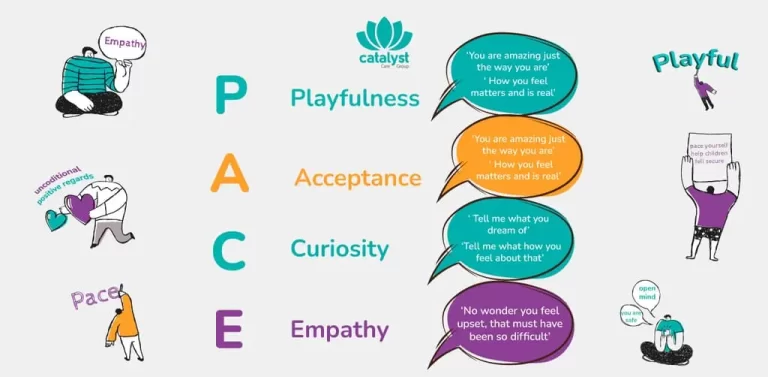Everything we do is guided by the brain – shaping how we learn, how we stay organised, and how we connect with others. With ADHD, these everyday things can feel overwhelming: keeping track of schoolwork, arriving on time, or maintaining friendships can become a struggle. We can look at a huge potential which is somehow not being reached. We can look at a huge potential which is somehow not being reached. This can start causing anxiety, even in young children, as they try to figure out the world, yet they face daily struggles with things that appear to be ‘ordinary’.
Reserarch shows that between 25% and 50% or more people with attention deficit hyperactivity disorder also happen to live with an anxiety disorder.
The link comes from overlapping traits like restlessness and difficulty concentrating, as well as the stress of managing challenges such as disorganisation and impulsivity. These pressures can heighten anxiety, which in turn makes it harder to focus and regulate emotions. This creates a difficult cycle of worry, distraction, and emotional strain.

This is our chance to change the system. Join our White Paper Survey 2025!
Key Characteristics of ADHD
For people with ADHD, everyday things like focusing, staying organised, or managing time can be especially challenging. ADHD isn’t about effort or laziness – it’s about how the brain processes attention, impulse, and energy. Understanding this makes all the difference in how we support people to succeed.
In 2025, NHS England Digital estimates that around 2.5 million people in England are living with ADHD, including approximately 741,000 children and young people.

Core Characteristics
- Inattention – difficulty focusing, easily distracted, daydreaming, losing things, forgetting tasks, struggling with organisation.
- Hyperactivity – restlessness, high energy, fidgeting, difficulty sitting still.
- Impulsivity – acting without thinking, interrupting, trouble waiting turns, making quick decisions.
How These Show Up in Daily Life
- Struggling to get to class on time or remember homework.
- Spacing out during lessons or conversations.
- Finding it hard to complete tasks unless they are exciting or urgent.
- Forgetting deadlines or missing opportunities (e.g., forgetting to sign up for a course).
- Difficulty managing routines and responsibilities (work, relationships, finances).
- Overwhelm caused by poor working memory.
- Skewed sense of time, leading to lateness or misjudging how long tasks take.
- Trouble regulating emotions and behaviour.
- Problems with planning, prioritising, and sustaining effort.
- Sleep difficulties linked to executive function challenges.
Broader Impact
- Higher likelihood of academic struggles despite high intelligence.
- Increased risk of job instability, relationship breakdowns, financial issues.
- Greater vulnerability to accidents and addiction.
Positives & Strengths Highlighted
- Creativity, humour, and generosity.
- Original thinking (“not even aware there is a box”).
- Strong performance when tasks are urgent, new, or personally meaningful.
- Higher likelihood of starting businesses and thriving in fast-changing environments.
In reality, the brain is simply working in a different way. Alongside the challenges lie creativity, curiosity, and unique strengths that, once recognised, can make a life-changing difference.
What is Anxiety?
Anxiety is the body’s built-in alarm system, designed to keep us alert when something feels uncertain or threatening. In small doses, anxiety can sharpen focus and prepare us to respond. But when that alarm keeps sounding long after the danger has passed – or even when there is no real danger at all – it shifts from being protective to disruptive. Instead of helping us manage challenges, anxiety begins to interfere with daily life, clouding decisions, straining relationships, and draining energy.
Generalised Anxiety Disorder is one of the most common forms of anxiety. Each week, roughly 6 in 100 people in England are recognised as having Generalised Anxiety Disorder.
Rather than being tied to one specific fear or situation, GAD lingers in the background as a constant, excessive worry about everyday things – work, health, family, or even the possibility of something going wrong. People often describe it as a restless mind that doesn’t have an “off switch,” accompanied by physical signs like muscle tension, difficulty sleeping, or feeling on edge. What sets GAD apart from ordinary worry is not only the intensity of these thoughts but their persistence: the worry is hard to control and continues for months, sometimes years, shaping how life is lived day to day.
Anxiety symptoms can include:
- Persistent worry or racing thoughts
- Restlessness or feeling “on edge”
- Difficulty concentrating
- Muscle tension or aches
- Trouble sleeping (falling asleep or staying asleep)
- Irritability
- Rapid heartbeat, sweating, or shortness of breath
- Difficulty swallowing
- Dry mouth
Is Overthinking a Sign of ADHD?
Overthinking isn’t listed as a core trait of ADHD, but it’s something many people with ADHD experience. Because the brain finds it harder to regulate attention and emotions, thoughts can feel like they’re stuck on repeat – replaying conversations, worrying about outcomes, or jumping from one “what if” to another. Rather than switching off, the mind stays active long after the moment has passed. This isn’t about weakness or lack of effort; it’s part of how the ADHD brain works, where attention can just as easily lock onto worries as it can drift away from tasks.

Why ADHD and Anxiety Are Often Linked
ADHD and anxiety often appear together because of the way the brain processes attention, emotions, and stress. ADHD can make it difficult to stay organised, manage time, or keep track of responsibilities, which over time creates repeated moments of frustration or missed expectations. These experiences can build into worry – not just about the tasks themselves, but about the possibility of failing again. Anxiety then takes hold as a constant state of alertness, a kind of mental “bracing” for problems that might occur.
The link is also rooted in how both ADHD and anxiety involve regulation systems in the brain. When attention is hard to direct, thoughts can drift toward worries and get stuck there. When emotions are harder to balance, everyday challenges feel more intense and harder to recover from. Together, this creates a cycle: ADHD makes life more unpredictable, anxiety rises in response, and the pressure of anxiety can in turn make ADHD traits like distractibility or restlessness even stronger.
Yet, it’s not only about difficulty. People who live with both ADHD and anxiety often develop deep awareness of their own patterns, creativity in finding solutions, and empathy for others facing invisible struggles. Understanding why the two are linked isn’t just about explaining symptoms – it’s about recognising how the brain responds to stress and learning ways to support strengths as well as challenges.
ADHD and Anxiety Overlap
ADHD and anxiety often show up together in adulthood, and because they share many traits, it can be difficult to separate one from the other. Both influence how focus, emotions, and daily responsibilities are managed, and their overlap can sometimes blur the picture. Understanding the similarities helps explain why adults may feel caught between distraction, worry, and constant pressure.
Similar symptoms of adult ADHD and anxiety can include:
- Difficulty concentrating or staying focused
- Restlessness or feeling constantly “on edge”
- Racing thoughts that are hard to control
- Forgetfulness and trouble keeping organised
- Sleep problems, such as trouble falling or staying asleep
- Irritability and low tolerance for stress
- Physical signs like muscle tension, rapid heartbeat, or fatigue
While the symptoms look alike, the root is different: ADHD is tied to challenges in regulating attention and impulses, while anxiety is driven by ongoing worry and anticipation of problems. When combined, the two can feed into each other, making everyday life more demanding – but also clearer to understand once the overlap is recognised.
Can ADHD Cause Anxiety?
ADHD itself doesn’t directly cause anxiety, but the challenges that come with it often create the conditions where anxiety develops. For adults with ADHD, difficulties with organisation, memory, or time management can lead to repeated stress – missing deadlines, forgetting commitments, or feeling overwhelmed by everyday demands. Over time, this cycle of setbacks can build into persistent worry, as the mind anticipates more problems ahead.
Anxiety also appears because ADHD affects emotional regulation. When focus shifts quickly or emotions feel harder to control, situations may feel unpredictable, which fuels tension and overthinking. In this way, ADHD and anxiety often work hand in hand: the struggles of ADHD increase pressure, while the presence of anxiety makes it even harder to manage ADHD traits. Recognising this link can help adults with ADHD understand that their anxiety is not a personal failing, but a response to the challenges their brain is managing.
Key Differences Between ADHD and Anxiety
Although ADHD and anxiety share overlapping traits, there are key differences that help in understanding an ADHD diagnosis. ADHD is rooted in difficulties with regulating attention and impulses, while anxiety is driven by persistent worry and anticipation of problems. Knowing these differences can make it easier to spot the unique patterns of each.
Key differences between ADHD and anxiety:
- Focus: ADHD involves shifting or inconsistent attention; anxiety disrupts focus because of worry.
- Thought patterns: ADHD brings distractibility or impulsive thinking; anxiety brings rumination and “what if” scenarios.
- Time management: ADHD is linked to poor organisation and a skewed sense of time; anxiety often leads to procrastination due to fear of failure.
- Physical signs: ADHD shows as restlessness and hyperactivity; anxiety includes tension, rapid heartbeat, and unease.
- Onset: ADHD diagnosis usually traces back to childhood traits, while anxiety can emerge at any stage of life.
Misdiagnosis of ADHD or Anxiety?
Misdiagnosis between ADHD and anxiety is common because the two share overlapping traits such as restlessness, poor concentration, and sleep difficulties. Research shows that adults with ADHD are frequently first diagnosed with anxiety or depression before their ADHD is recognised, delaying appropriate support. The difference lies in why the symptoms occur: ADHD is linked to impaired regulation of attention and executive functions, while anxiety is driven by persistent worry and hyperarousal. Without careful assessment, the surface similarities can mask the root cause. Clinicians often look at patterns over time to distinguish them:
- ADHD: symptoms present since childhood, attention shifts rapidly, forgetfulness and disorganisation are consistent across settings.
- Anxiety: symptoms often begin later, attention is disrupted by worry, and restlessness is tied to specific fears or stressors.
Accurate diagnosis relies on a full clinical history, evidence from multiple settings (school, work, home), and ruling out that symptoms are not solely caused by anxiety or stress. Studies confirm that misdiagnosis is reduced when structured interviews and validated ADHD rating scales are used alongside anxiety assessments.
Managing ADHD and Anxiety Together
Living with both ADHD and anxiety can feel like being pulled in two directions at once — the racing thoughts of anxiety colliding with the distractibility of ADHD. Instead of treating them separately, research shows the most effective support looks at how they interact in daily life and tackles both together.
Ways that can help manage ADHD and anxiety include:
- Integrated care – treatment plans that address both at the same time, often blending therapy with medication when needed.
- Cognitive Behavioural Therapy (CBT) – proven to reduce anxious thinking while also supporting planning and organisation.
- Exercise – boosts brain chemicals like dopamine and serotonin, which improve focus and calm stress.
- Consistent routines – structure helps reduce overwhelm, making it easier to stay organised and lowering uncertainty.
- Mindfulness practices – meditation and breathing exercises reduce overarousal and support emotional balance.
- External support – coaching, peer groups, or workplace adjustments create accountability and ease daily pressure.
Catalyst Care Group Supports Neurodivergent People
Catalyst Care Group provides tailored mental health support for neurodivergent people, combining compassionate coordination with specialist input such as Positive Behaviour Support, multimedia and communication support, and occupational therapy.
Our approach focuses on strengths, clear routines, and practical strategies that reduce distress and improve everyday life, with care coordinators working closely with families and teams to keep plans consistent and responsive.
At Catalyst Care Group, we work alongside carers, and commissioners to provide the right support for neurodivergent people. Reach out to us or make a referralto explore how we can help.













